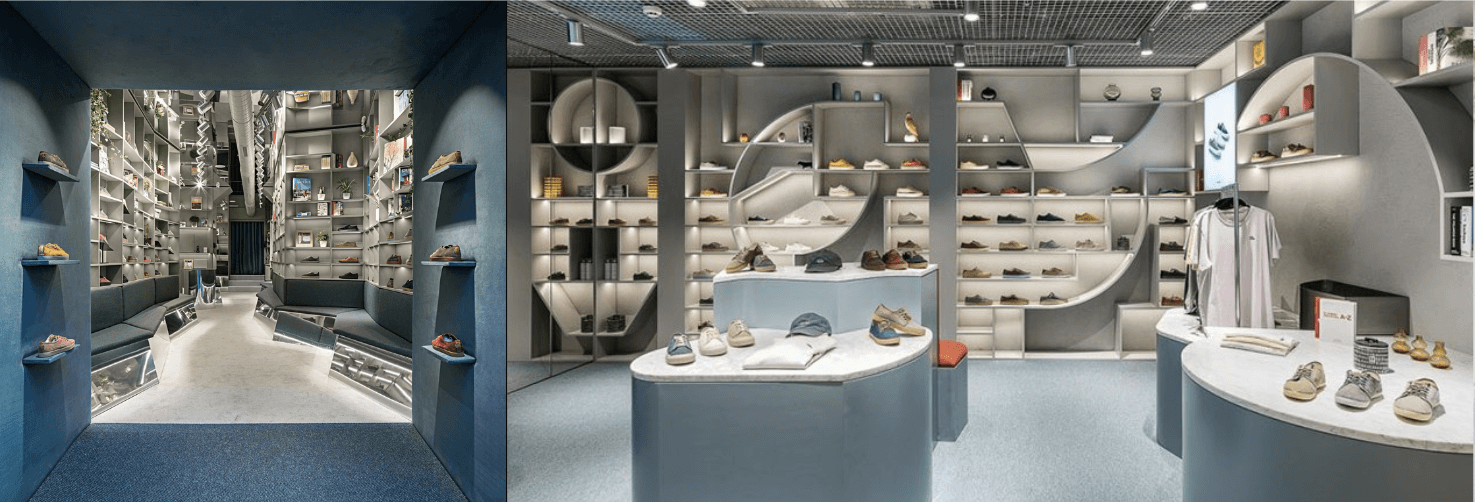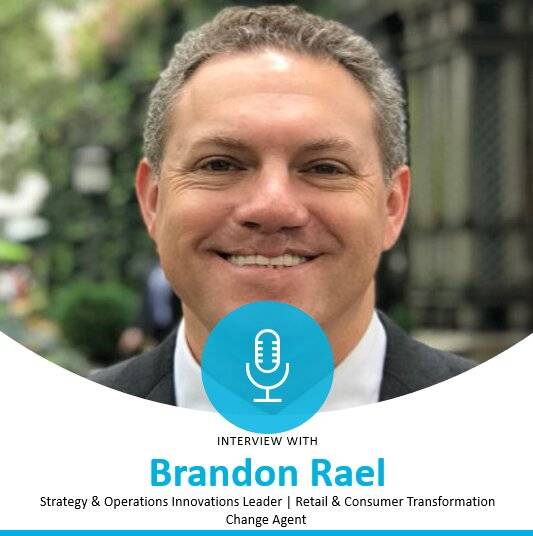Customer experience is the axis upon which the success of any fashion retail brand revolves. This is something that Svetlana Suchkova, founder of Vega Retail, not only understands perfectly but has also made the core of her business philosophy. With over 20 years of experience in the sector, and a career that spans from executive roles to her current position as an entrepreneur, Svetlana argues that having a customer experience manual, which serves as a true “bible” for all employees, is crucial for success. In this interview, we delve into her vision of the future of retail, the irreplaceable role of the physical store, and why passion and customer attention are the pillars on which any business must be built if aspiring not only to survive but to thrive.
Interview Retail – Customer Experience, the key to success
Svetlana, thank you for your time for this interview. Lately, there’s a lot of talk about retail being on its last legs, that it won’t survive in the new era, that its days are numbered. We’d like to start there. As an expert in the sector, do you believe these doomsday predictions are justified, or do you hold a more optimistic view?
Thank you for the invitation. And thank you for throwing this challenge as the first question. I wouldn’t call it being optimistic; I would call it being realistic. Just take a look at the impacts we receive every day through our multiple opportunities to interact with the environment and the market: discounts in certain stores, promotions here and there, continuous launches of new products, coupons… This speaks of vitality. For it to also speak of success, a first point: success comes hand in hand with customer experience. Because as long as there is a customer willing to reward the experience, there will be a market, there will be commerce, there will be retail.
Yes, but we’re referring to that constant announcement of the end of the offline store due to the rise of e-commerce. What’s your opinion on this? Do you think the physical store’s days are numbered?
You know that meme of Homer Simpson announcing the end of the world? Well, the supposed end of the physical store is a bit like that: more of a meme than reality. Let’s look back just a few years when the pandemic forced us to stay at home, and the stores emptied to the delight of online commerce. What happened as soon as the lockdowns were lifted? The stores filled up again. Physical stores offer a sensory and emotional experience that online shopping cannot replicate. And I would even add: in fact, online shopping has never sought to replace that experience. That’s an idea embedded in the mental barriers of traditional offline retail management, but not in the principles of e-commerce.
I firmly believe that physical retail has a bright future, as long as it stays true to human needs. Physical stores remain relevant, but they must adapt to the new demands of customer experience to survive and thrive.
The supposed end of the physical store is more a meme than reality.
So, what do you think is the key to a physical store’s success in this new environment?
There are seven essential components to create a successful in-store customer experience. We can’t go into all of them in detail in this interview, but the first one is having a customer experience manual that serves as a bible for all employees. This manual should be the cornerstone of everything else. It should be revered, and it should be the last thing you think about before going to bed and the first thing when you wake up.
This ensures that absolutely all employees and collaborators, from the IT and logistics teams to the salespeople, are aligned with what the customer expects. It’s crucial that the entire company, not just the store team, thinks about the end customer. Ensuring this connection between departments makes a big difference.

Speaking of employees, what role do they play in creating this experience?
Employees are everything. And this doesn’t mean throwing money around to get the best. It means motivating them appropriately, incentivizing them with key indicators. This doesn’t require invention; just look at companies like Apple, for example, which incentivizes its employees based on customer satisfaction (NPS).
That’s the first point. The second point is that the team must receive continuous training and be aware of sales indicators and customer feedback. This allows them to constantly improve and exceed customer expectations. You’d be surprised how many employees don’t know how to calculate conversion rate because no one has bothered to explain this crucial factor. How can we expect an employee to share the management’s passion for these indicators if they don’t even know what we’re talking about? A simple understanding of these factors drastically changes the team’s attitude.
Employees are everything. And this doesn’t mean throwing money around to get the best. It means motivating them appropriately
Do you need to become a tech addict to elevate customer experience to the level required these days?
Technology is key to improving the in-store experience. From efficient point-of-sale systems and clear sales reports to customized CRM solutions and engagement tools like Google, WhatsApp, or Instagram, technology enables faster, more personalized, and more connected service. Although every company knows this, we still see how bureaucracy affects customer service, especially when it comes to problem-solving.
Without cutting-edge technology, there can still be a valid customer experience, but in any case, customer experience is incompatible with elements that kill innovation, like oversized bureaucracies.

So, how can technology be integrated without losing the human touch in customer service?
What a great question! Technology should be our ally, not a replacement for the human touch in service. We must understand once and for all that success in retail requires one thing: it’s essential that the team has the necessary time to focus on customers. Often, employees are overwhelmed with administrative tasks like restocking, storage, phone calls, emails, reports, analytics, purchasing, and visual merchandising, among many others. The truth is that all these tasks can make it difficult to offer impeccable customer service, which requires time and attention.
That’s why optimizing these tasks with the help of technology is key to allowing staff to spend more time on what really matters: serving our customers in the best way possible!
By the way, a message for IT departments: employees should be experts in their field, not in various technologies. The technologies developed or incorporated must also consider the customer experience, starting with your own team: user-friendly applications, with impeccable design, bomb-proof UX, fast, scalable, and that meet real needs. Without this, they’ll just be another gadget for employees to learn.
Technology should be our ally, not a replacement for the human touch in service
Speaking of design, does the design of a physical store still play a relevant role?
An attractive and flexible store design is crucial. With the right analytics (and this is something you know well here at Flame Analytics), an unimaginable number of parameters can be adjusted. Everything that helps with interior navigation, trend discovery, participation in events, or incentivizing engagement through participation (hello, selfie spot!) are winning points. Or better put: if you don’t consider these, you won’t last long in the game. Additionally, impeccable visual merchandising makes a difference in how customers perceive the brand and products. If we’re talking about a shopping experience that really stands out, these are sine qua non conditions.

We’re almost done, so let’s change gears: How does inventory management impact the customer experience?
At the risk of sounding like everything you ask me about is critical… the truth is, inventory management is. Using predictive analytics allows us to anticipate customer needs, optimize inventory, and ensure that popular products are always available. The customer experience is severely impacted if they can’t find the size or color they’re looking for, whether in-store or online.
Using predictive analytics allows us to anticipate customer needs
To all of the above, we must add sustainability. Will you also say it’s critical?
Well, sustainability isn’t just a “trend,” if you’ll allow me the wordplay with our sector. Sustainability also recognizes transparency and commitment as commercial vectors. The same customer, faced with the same product, price, and service, will choose the one that offers guarantees in terms of origin, manufacturing, traceability, etc. Add in options for the end of the product’s traditional life cycle, like resale, repair, recycling, or donation. All this significantly improves brand perception. For example, I recently discovered the RE.Uniqlo service that the brand offers to its customers, and I think solutions like this are exactly what we need to understand and practice sustainability effectively.

Final and inevitable question. Or rather, a comment: you’ve gone from a promising career in executive roles at renowned brands to… becoming an entrepreneur under your own brand, Vega Retail. This is quite a leap. Doesn’t it feel terrifying?
The real fear would be not giving life meaning. The greatest excitement in this life and professional journey is not that it’s a business project, but that it’s a way to channel a passion, some convictions, and a worldview of the sector. Vega Retail’s goal is to help fashion brands discover new growth opportunities and improve the profitability of their physical stores. It might seem like a big challenge, but the truly complex (impossible, I’d say) thing is to expect different results by always doing the same thing. Vega Retail puts as much passion as experience into this goal and achieves truly surprising results.
In short, it’s about emphasizing the main topic of this conversation we’re now concluding: customer experience. Our mission is to build infrastructures that provide an unforgettable customer experience, from staff training to process optimization. We are the ideal partner for brands that not only want to survive but also to stand out in a world that some describe as a shark-infested red ocean, but which we see as a vast blue ocean of opportunities







